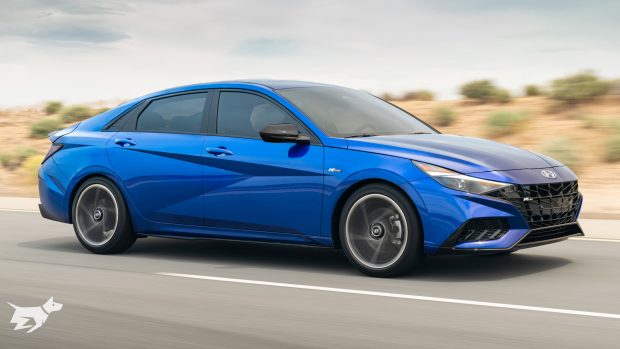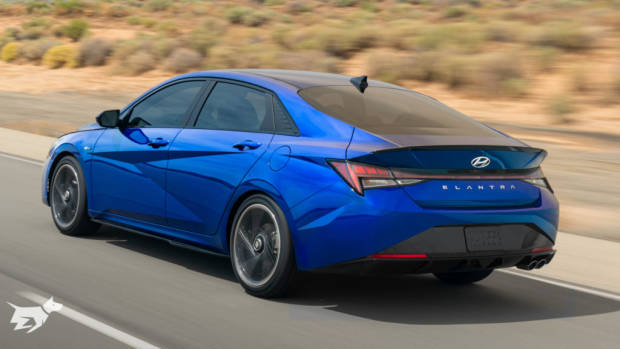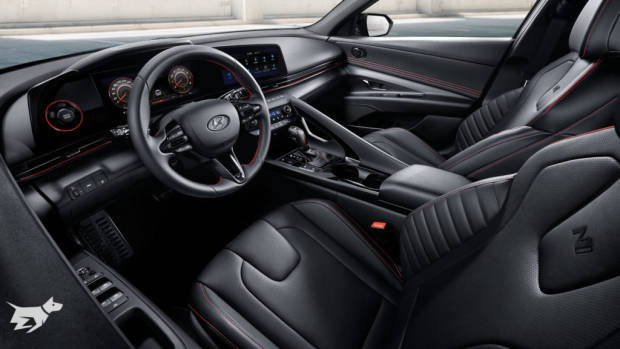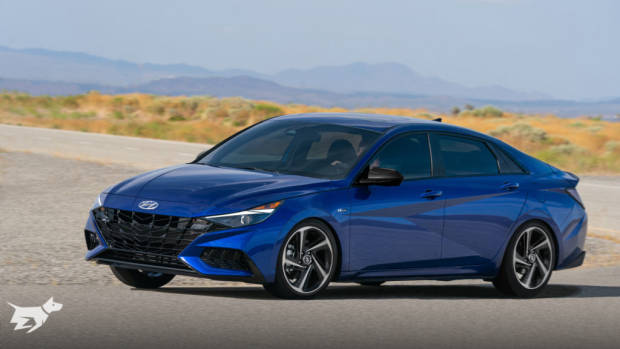-
Car Reviews
- All reviews
- Midsize SUVs
- Small cars
- Utes
- Small SUVs
- Large SUVs
- Large cars
- Sports SUVs
- Sports cars
- Vans
Latest reviews
- Car News
-
Car Comparisons
Latest comparisons
- Chasing Deals

In good news for Australian buyers who continue to eschew SUVs in favour of sporty four-doors, Hyundai this morning revealed the 2021 i30 Sedan N-Line – a four-door riding on a new platform that will replace the outgoing Elantra Sport while sharing that vehicle’s 1.6-litre turbocharged petrol engine.
With outputs of 150kW of power and 265Nm of torque, the new i30 Sedan N-Line will be a familiar drive – a fact confirmed by the fact both of the Elantra Sport’s gearbox options will be returning. These include a popular seven-speed dual-clutch automatic transmission – and in a nod to the enthusiast set, a six-speed manual as well.
The 1.6-litre turbo engine does receive some updates, notably in the form of Continuously Variable Valve Duration, helping to lift real-world fuel economy. Plus, as we noted on our video walkaround of a prototype i30 Sedan N-Line – which you can watch above – the exhaust note has been tuned to sound considerably meaner.
Otherwise, the i30 Sedan N-Line appears as more or less a brand-new car. Despite the decision to delete the Elantra name from Hyundai’s smallest four-door sedan locally, the i30 Sedan does not share a platform with the more familiar hatchback version, and will instead launch in Australia before the end of 2020 with an all-new chassis, which is in the process of being locally tuned for Australian roads.
Local tuning of the suspension and handling aside, the i30 Sedan N-Line will arrive with 18-inch wheels and grippier tyres than the standard version of the car, which will also come to Australia – and like the N-Line version of the i30 hatch, there’s also a multi-link independent rear suspension on this hotted-up version. Until a purely hypothetical i30 Sedan N arrives – as in a full-fat version to mirror the i30 N hatch and Fastback – this is as hot as the four-door gets.
There are substantial changes to the design of the i30 Sedan compared to the outgoing Elantra Sport, both outside and in. Hyundai’s hiring of Luc Donkerwolke – previously of Lamborghini – has injected a strong dose of assertiveness to this brand’s exterior shapes, and there will be no missing the triangular motif of the new i30 Sedan out on the road. On the N-Line, the grille, side skirts and diffusers are all blacked-out.
Inside, the cabin takes a marked step forward in appearance, with a fully digital cockpit pairing twin screens in a move that we thought was similar to, if not quite the equal of, current Mercedes-Benz cars – except that in the Hyundai, the tech is much easier to use. Digital gauges change with the selected drive mode, while the central touchscreen carries a very high resolution allowing the viewing of three ‘panels’ of information at once.
A broad grab handle cuts a swathe through the cabin, leaving you in no doubt that this is a driver-focussed cockpit. The prototype we sat in featured electrically-adjustable heated cloth seats, but final Australian specifications are yet to be announced prior to a fourth-quarter 2020 launch.
Latest news
About Chasing cars
Chasing Cars reviews are 100% independent.
Because we are powered by Budget Direct Insurance, we don’t receive advertising or sales revenue from car manufacturers.
We’re truly independent – giving you Australia’s best car reviews.


